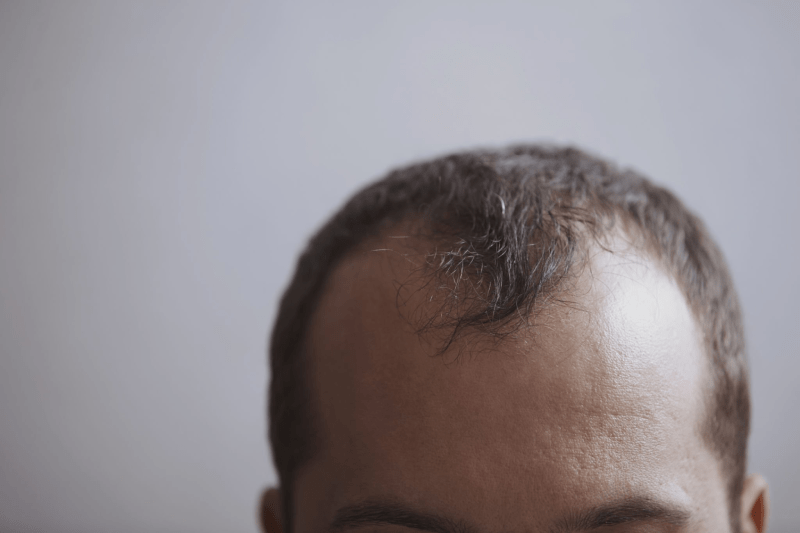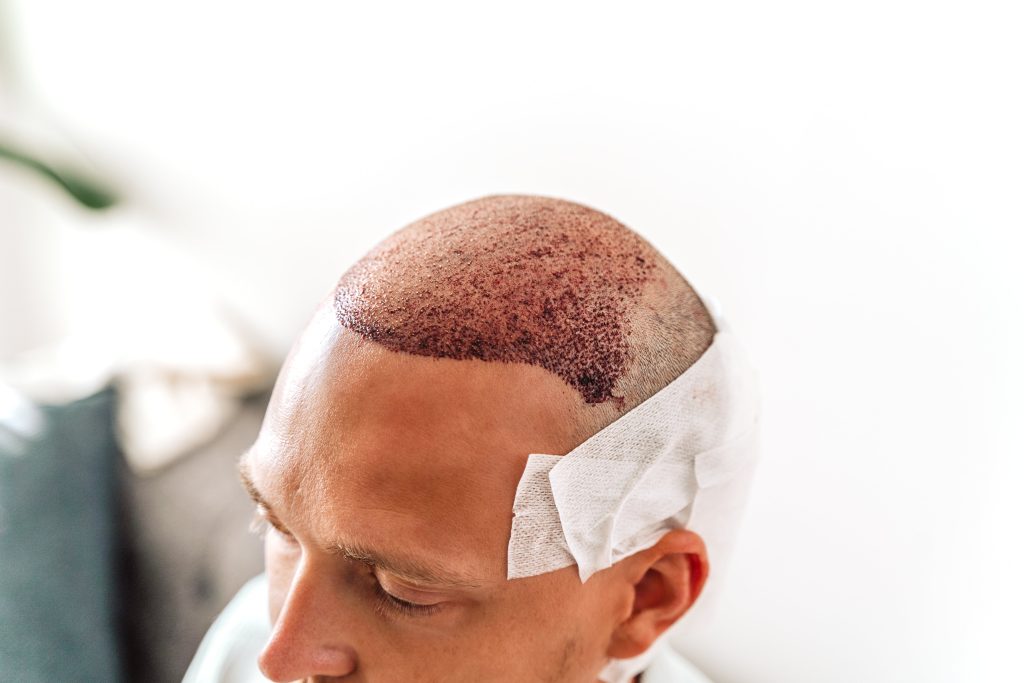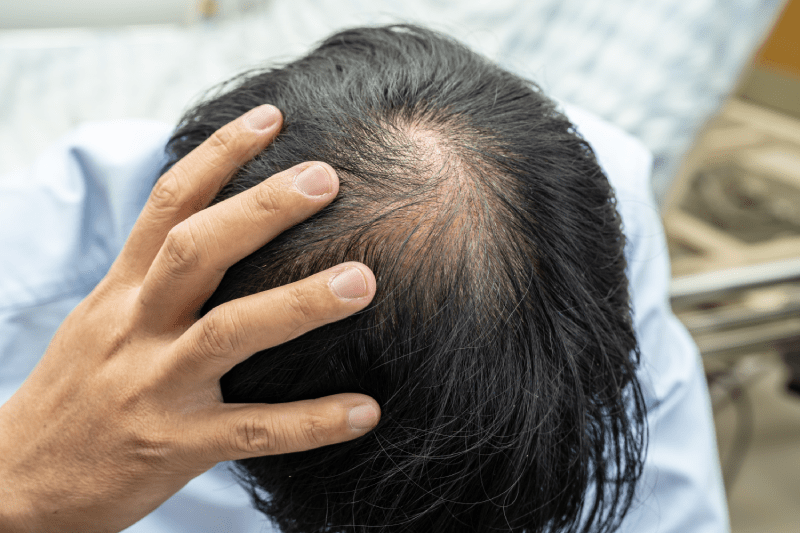Which One Is Better Sapphire FUE Or DHI?

What Is DHI And Sapphire FUE?
The Sapphire procedure is using a sapphire blade to make incisions on the scalp and then inserting grafts using forceps.
There is no need for pre-made incisions with the sharp implantation technique, also known as DHI, which makes use of a hair implanter pen.
A graft implantation tool that resembles a pen is called a hair implanter pen.
The graft is pushed into the skin by depressing a plunger on the implanter. The surgeon can make the recipient site and implant the grafts in one motion. Forceps are never used to manipulate the hair bulb during implantation. In contrast, the wall of the implanter pen shields the graft during insertion.
Does donor hair grow back after DHI?
The individual hairs won’t technically grow back because the hair follicles have been completely plucked. However, because your doctor will be removing individual hair follicles from the densest regions of the donor area, it will be impossible to see over time. This is due to the cherry-picking approach used in hair follicle extraction.
What is the success rate of DHI hair transplant?
There is no question that surgical hair transplants have greater impact and a higher success rate than alternative hair restoration techniques, such as over-the-counter products. After a DHI hair transplant, you can anticipate that 10 to 80% of the new hair will grow in within four months. 100% of DHI hair transplants are successful.
How many grafts can you do with DHI?
One of the most important questions in hair transplant treatments is how many grafts you need. If you are planning to receive hair transplant treatment, how many grafts of hair you need should be determined with an online consultation.
Thus, you will not have any problems during your treatment. Unfortunately, less number of hair transplants are possible in DHI treatment compared to Saphire Fue. While it is possible to get 1500 grafts of hair transplantation with the DHI technique, this number can vary between 4,000 and 6000 with Saphire Fue.
Does DHI require shaving?
Another of the most important issues is that the length of the hair does not mean anything in the DHI technique. This method, which is frequently preferred by patients who do not want to shave their hair, also allows women to have hair transplantation.

Does DHI damage existing hair?
One of the most well-liked hair transplantation procedures is DHI Direct Hair Implant in Dubai since it is carried out without cuts, scars, or sutures. While the grafts needed for hair transplantation are removed, the existing hair is not harmed. The Choi Implanter Pen is used to extract and implant hair follicles. As a result, hair transplantation with DHI technology enables you to achieve a successful and natural outcome. There is no channel opening, incision, or need for stitches, allowing you to resume your normal activities right away.
Is sapphire FUE better?
The channel formation stage of a typical FUE procedure can result in tissue injury since the conventional steel blades used in the procedure become dull and less effective with time. In contrast, sapphire blades are more sharper to begin with and can maintain their sharpness for a longer period of time.
Which procedures are right for Me?
Compared to FUE, the DHI treatment is more recent, and DHI is typically advised for people under the age of 35. This is because, compared to other age groups, hair loss in people under 35 is not as advanced and there is a considerably better success rate in these cases. The FUE surgery is regarded as safe with just minor potential side effects, such as tiny white scars where the follicles are removed. Although it is not frequently seen during the FUE treatment, infection or tissue death could happen where the operation was performed.
On the other side, we can only implant a total of 4000 grafts during DHI surgery. Additionally, you can choose the size and direction of hair growth in accordance with your preferences using the DHI Hair Transplantation procedure, which also has the benefit of not requiring canal drilling. The DHI method is a process that offers a good rate to produce better density, although the FUE method can be preferable because it covers bigger areas than the DHI method. They claimed that both FUE and DHI had a 95% success rate when compared to the recommendations of the experts. This demonstrates that both methods, regardless of which one you choose, are very safe.

What’s the difference between FUE and sapphire FUE?
Sapphire FUE or DHI
A hair transplant demands a tremendous deal of skill and consideration to be completed. The procedure employed during the transplantation varies amongst hair transplant surgeries. Each method has benefits and drawbacks. We cannot declare one to be superior to the other for this reason.
- The primary distinctions between DHI and Sapphire Fue procedures will be covered in this article. Both techniques differ in how they are carried out. Checking out what they are;
- Shaving the donor area is necessary while using the Sapphire Fue technique but not when using the DHI technique. This distinction enables people with long hair to select the procedure that they prefer. Those who wish to use short hair will find the Sapphire FUE process to be considerably more practical.
- The amount of grafts that can be planted in a session while using the Sapphire Fue technique varies between 3000 and 4500 grafts. This sum is restricted for the DHI method. There is a range of 1500 to 2500 grafts that can be planted during a DHI session. This means that while the DHI method offers a better chance for attaining results, the Sapphire FUE approach is best for covering broad areas.
- Compared to the FUE procedure, the DHI method can be performed with less bleeding and has a quicker recovery time. This indicates that DHI offers time savings for people who experience reduced hair loss and more comfortable recover.
- Although the Sapphire FUE technique has a higher implantation frequency than the traditional FUE method, the DHI method has the advantage of planting more frequently than Sapphire, especially in small spaces. This indicates that DHI offers greater hair density than any other method.
- Sapphire Fue is less expensive than DHI treatment in terms of price. The greater cost values of the equipment needed to execute DHI have an impact on the surgery’s overall budget.
- Sapphire FUE surgery is finished in a single session and takes 6 to 8 hours. For a single session, the DHI hair transplant treatment lasts between 7 and 9 hours.
How long does DHI hair transplant last?
It is only reasonable to wonder how long a hair transplant will take when thinking about getting one. Have your hair transplant performed by a qualified and reputable hair transplant doctor if you want it to last a lifetime. Your expanded hairline will have a new line when the hair transplant procedure is complete.
The freshly transplanted hair may, however, begin to fall out in two to six weeks for a small number of patients. You’ll start to notice new hair growing permanently after a few months. All of the transplant’s effects will be visible in a year. When healthy hair follicles are implanted into thinning or bald areas, hair transplantation can often last a lifetime.
What is the best option for hair transplant?
It would not be correct to present a planting technique under the name of the best hair transplantation technique. In addition to the suitability of the patient’s donor forehead, it will be necessary to choose a technique in line with the patient’s request. However, you should know that the Saphire Fue technique has a chance to give 100% efficiency. Therefore, the best hair transplant technique will be Saphire Fue. However, you should know that the DHI technique is also quite successful.



